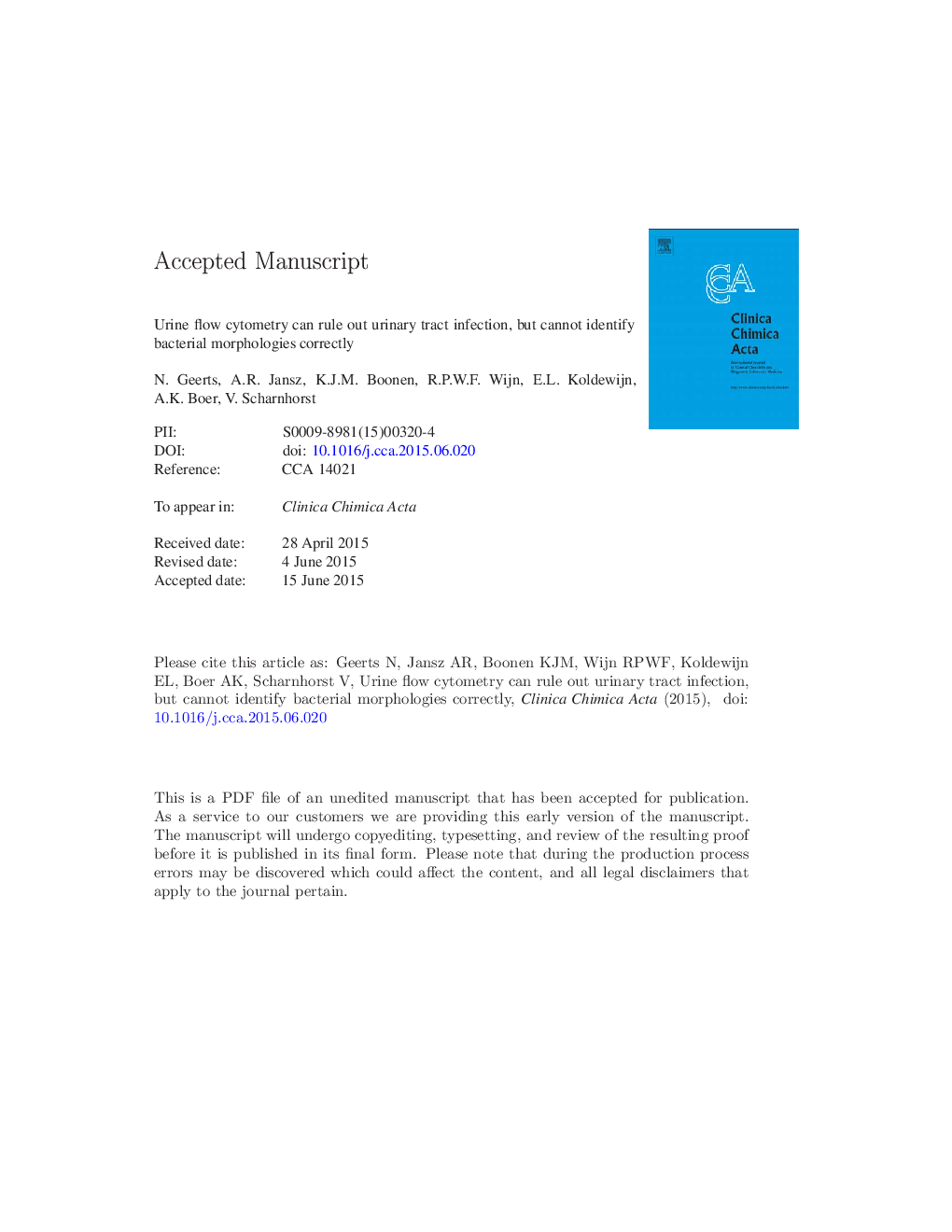| Article ID | Journal | Published Year | Pages | File Type |
|---|---|---|---|---|
| 8310589 | Clinica Chimica Acta | 2015 | 15 Pages |
Abstract
The diagnosis of urinary tract infection (UTI) by urine culture is a time-consuming and costly procedure. Usage of a screening method, to identify negative samples, would therefore affect time-to-diagnosis and laboratory cost positively. Urine flow cytometers are able to identify particles in urine. Together with the introduction of a cut-off value, which determines if a urine sample is subsequently cultured or not, the number of cultures can be reduced, while maintaining a low level of false negatives and a high negative predictive value. Recently, Sysmex developed additional software for their urine flow cytometers. Besides measuring the number of bacteria present in urine, information is given on bacterial morphology, which may guide the physician in the choice of antibiotic. In this study, we evaluated this software update. The UF1000i classifies bacteria into two categories: 'rods' and 'cocci/mixed'. Compared to the actual morphology of the bacterial pathogen found, the 'rods' category scores reasonably well with 91% chance of classifying rod-shaped bacteria correctly. The 'cocci/mixed' category underperforms, with only 29% of spherical-shaped bacteria (cocci) classified as such. In its current version, the bacterial morphology software does not classify bacteria, according to their morphology, well enough to be of clinical use in this study population.
Related Topics
Life Sciences
Biochemistry, Genetics and Molecular Biology
Biochemistry
Authors
N. Geerts, A.R. Jansz, K.J.M. Boonen, R.P.W.F. Wijn, E.L. Koldewijn, A.K. Boer, V. Scharnhorst,
